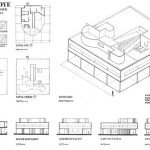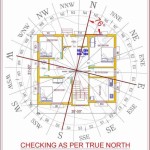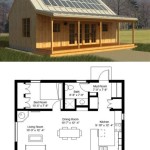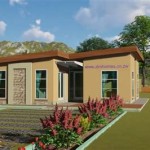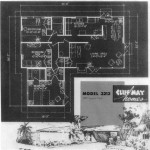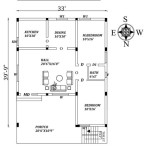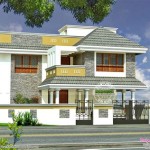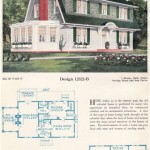Here's an article on Ranch House Plans, adhering to your specifications:
Ranch House Plans: A Comprehensive Overview
Ranch house plans, also known as rambler house plans, represent a significant style in residential architecture, characterized by their single-story profile and emphasis on horizontal lines. Originating in California during the 1930s, the ranch house gained widespread popularity post-World War II, reflecting a desire for affordable, functional, and family-friendly homes. These house plans continue to be relevant in contemporary housing design, offering adaptable layouts and a connection to the outdoors.
The defining features of a ranch house plan include a low-pitched roof, often with wide eaves, and a simple, open floor plan. This emphasis on a single level makes ranch homes accessible for individuals with mobility challenges and appeals to families with young children. Large windows and sliding glass doors are commonly integrated to maximize natural light and create a seamless transition between indoor and outdoor living spaces. The exterior is frequently characterized by understated elegance, often featuring materials such as brick, wood siding, or stucco. Garages are almost always integrated, either attached to the main structure or situated nearby. The appeal of the ranch style lies in its adaptability, allowing for modifications and expansions to accommodate evolving lifestyle needs.
Key Point 1: The Architectural and Historical Significance of Ranch House Plans
The evolution of ranch house plans is deeply intertwined with the social and economic shifts of the mid-20th century. Following World War II, the United States experienced a housing boom, fueled by returning veterans and a growing middle class. The demand for affordable and efficient housing solutions led to the widespread adoption of ranch-style homes. Developers appreciated the ease of construction and the efficient use of land that ranch house plans offered. These homes could be built relatively quickly and economically, catering to the urgent need for housing.
Architecturally, ranch houses represent a departure from the more formal and intricate styles of previous eras, such as Victorian or Craftsman. The emphasis shifted toward simplicity, functionality, and a connection to the natural environment. The open floor plan was a significant innovation, promoting interaction between family members and providing a more informal living environment. The large windows and sliding doors further blurred the lines between indoors and outdoors, reflecting a desire for a relaxed and casual lifestyle.
The historical significance of ranch house plans lies in their representation of a specific period in American history. They symbolize the optimism and prosperity of the post-war era, as well as the changing values of American society. The ranch home became a symbol of the American Dream, offering families the opportunity to own a comfortable and spacious home in the suburbs.
Key Point 2: Essential Elements of Ranch House Design
Several essential elements contribute to the distinctive character of ranch house plans. These elements include the floor plan, the roof design, the exterior features, and the integration of indoor and outdoor spaces.
The floor plan is typically characterized by its open and flowing layout. The living room, dining room, and kitchen are often integrated into a single, large space, promoting interaction and creating a sense of spaciousness. Bedrooms are usually located in a separate wing of the house, providing privacy and separation from the main living areas. Hallways are minimized to maximize usable space, and storage solutions are incorporated throughout the home.
The roof design is another defining feature of ranch houses. The low-pitched roofline contributes to the horizontal emphasis of the style and helps to minimize the visual impact of the home. Wide eaves provide shade and protection from the elements, and they also add to the overall aesthetic appeal of the house. The roof may be gabled, hipped, or flat, depending on the specific design and the regional climate.
Exterior features of ranch houses often include a combination of materials, such as brick, wood siding, and stucco. These materials are chosen for their durability, affordability, and aesthetic appeal. Large windows and sliding glass doors are incorporated to maximize natural light and create a connection to the outdoors. A front porch or patio is a common feature, providing a welcoming space for guests and a place for residents to relax and enjoy the outdoors. Landscaping is often used to enhance the curb appeal of the house and to create a sense of privacy.
The integration of indoor and outdoor spaces is a key element of ranch house design. Large windows and sliding doors blur the lines between the interior and exterior, creating a seamless transition between the two. Patios, decks, and courtyards are often incorporated into the design to provide outdoor living spaces for dining, entertaining, and relaxing. Landscaping is used to create a natural and inviting environment, further enhancing the connection to the outdoors.
Key Point 3: Adapting Ranch House Plans for Modern Living
While ranch houses originated in the mid-20th century, they remain relevant and adaptable to modern living needs. Contemporary ranch house plans often incorporate updated materials, energy-efficient technologies, and flexible design features to meet the demands of today's homeowners.
One of the key ways that ranch house plans are being adapted for modern living is through the incorporation of open-concept layouts. This design approach emphasizes large, interconnected spaces that facilitate interaction and create a sense of spaciousness. The kitchen, living room, and dining room are often combined into a single, open area, providing a flexible space for entertaining, family gatherings, and everyday living.
Energy efficiency is another important consideration in contemporary ranch house plans. Features such as high-performance windows, insulation, and HVAC systems are incorporated to reduce energy consumption and lower utility bills. Solar panels and other renewable energy technologies may also be integrated into the design to further enhance energy efficiency. Smart home technology can also be used to control lighting, temperature, and security systems, providing greater convenience and energy savings.
Accessibility is a key factor in the appeal of ranch house plans, particularly for aging homeowners or individuals with mobility challenges. The single-story design eliminates the need for stairs, making it easier to navigate the home. Wider doorways and hallways, along with accessible bathrooms and kitchens, can further enhance accessibility and allow homeowners to age in place comfortably. Universal design principles are often incorporated into the design to ensure that the home is accessible to people of all ages and abilities.
Finally, contemporary ranch house plans often incorporate flexible design features that allow homeowners to customize the space to their specific needs. Bonus rooms, home offices, and in-law suites can be added to accommodate changing family dynamics and lifestyle requirements. Outdoor living spaces, such as patios, decks, and outdoor kitchens, are also becoming increasingly popular as homeowners seek to extend their living space and enjoy the outdoors.
In conclusion, ranch house plans offer a versatile and adaptable housing solution that continues to appeal to homeowners in the 21st century. Their emphasis on simplicity, functionality, and a connection to the outdoors makes them a timeless choice for individuals seeking a comfortable and livable home.
Numerous resources are available for individuals interested in exploring ranch house plans further. Online plan providers offer a vast array of designs, ranging from traditional to contemporary styles. Architects and designers can also provide customized plans to meet specific needs and preferences. Additionally, books and magazines dedicated to home design feature examples of ranch house plans and offer inspiration for creating a personalized living space. By considering the architectural history, essential design elements, and modern adaptations of ranch house plans, individuals can make informed decisions about their housing choices.

House Plan 45467 Ranch Style With 1680 Sq Ft 4 Bed 2 Bath

Tierney Ranch House Plans Luxury Floor

Affordable Ranch House Plan 1453

Ranch House Plans With Open Floor Blog Homeplans Com

Beautifully Simple Ranch House Plans Dfd Blog

House Plan 81504p Quality Plans From Ahmann Design

Ranch House Plans Style Home Designs The Designers

House Plan 51987 Ranch Style With 3366 Sq Ft 4 Bed 3 Bath 1

Ranch House Plans With Open Floor Blog Homeplans Com

Dos Riatas Ranch House Plan Archival Designs

